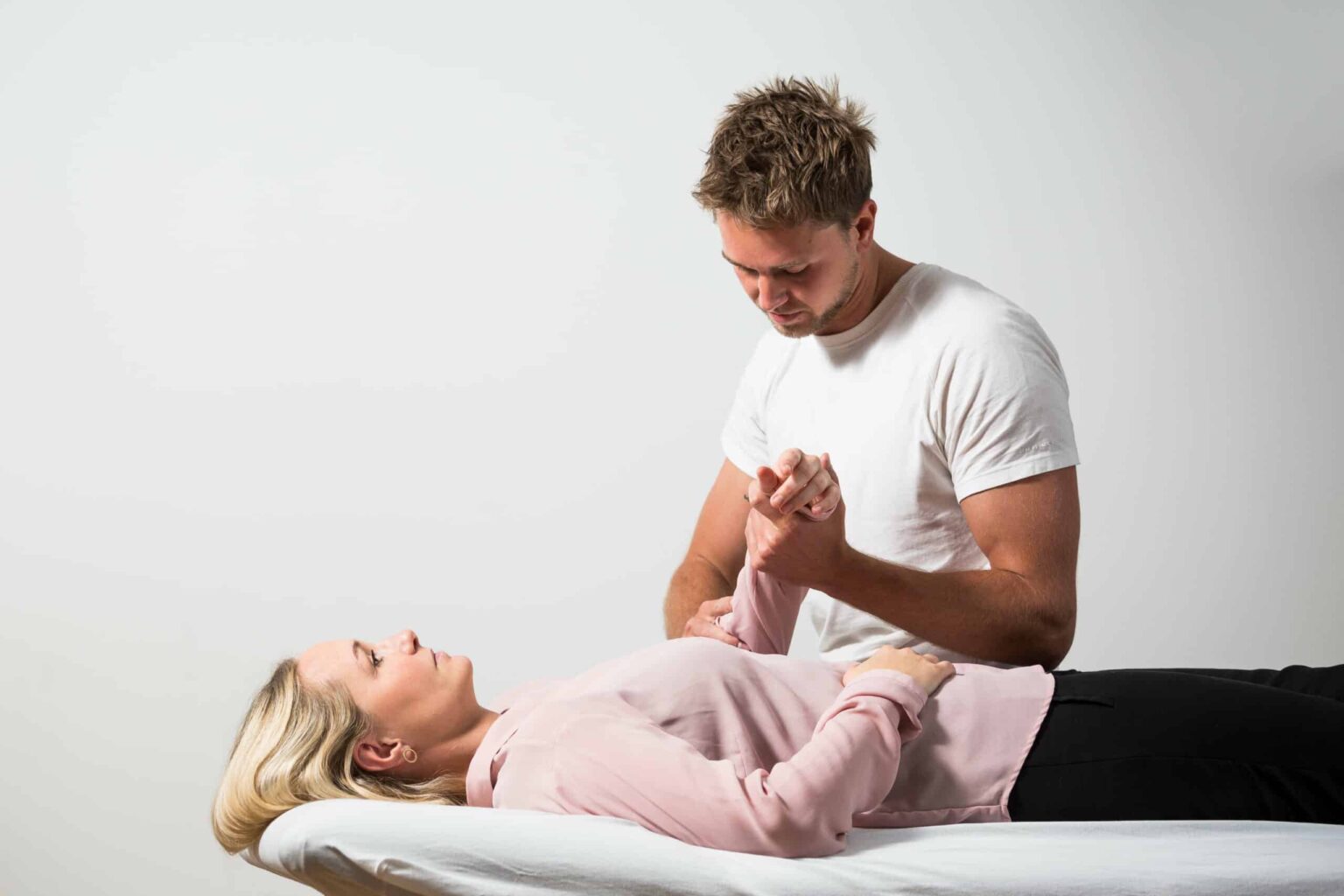We advise on problems from
Shingles
Learn more about shingles and its treatment
What is shingles?
Shingles is a viral infection that causes a painful rash on the skin. This occurs when the varicella-zoster virus becomes active in the body and breaks out.
Varicella-zoster virus is the same virus that causes chickenpox, so once you have had chickenpox, the virus does not completely disappear from your body. The virus lies dormant in the body’s nerve cells and can sometimes flare up. During the flare-up, the virus travels along the affected nerves to the skin and causes a rash. Exactly what leads to reactivation of the virus is not known.
Jump to section [Vis]
General treatment of shingles
Since shingles is caused by the same virus as chickenpox, it also means that if you have had chickenpox, you cannot be infected with chickenpox and get Shingles – but if you have Shingles, you can infect people who have not had chickenpox. This is especially important to know if you are around people who are immunosuppressed or weak who have not had chickenpox.
Shingles is diagnosed by a doctor and is mostly treated exclusively there.
If you suspect an outbreak of Shingles, you should contact your doctor immediately. The doctor can typically diagnose based on medical history and symptoms, or a scraping of the blisters can detect the virus. It is especially important to seek medical attention urgently if the outbreak is on the face, as the virus can attack the nerves around the eye.
If you see a doctor early, he or she can in some cases provide antiviral treatment as well as treatment for any accompanying or complicating conditions. Your doctor can also prescribe painkillers and/or antiviral creams. (Source: Sundhed.dk).

Late effects of shingles
The most common late effect of shingles is nerve pain caused by the virus (postherpetic neuralgia). The nerve pain can last from weeks (about 90%) to months (about 5%) and in rare cases years (3%).
However, an Icelandic study points out that pain in people under 60 years of age is typically mild after 3 months, and that very few complications are seen clinically. This applies to both men and women. In this study, age is the greatest predictor of complications with chronic pain after a first outbreak of shingles.
(Source: National Library of Medicine)
Osteopathic treatment of shingles
Osteopathic treatment can be a valuable complementary therapy in the treatment and management of a Shingles outbreak. Osteopathic treatment does not focus on treating the virus itself, but it can be helpful in managing the symptoms of the outbreak, as well as promoting the body’s natural healing processes. (Source: Springer).
Below are some of the key points an osteopath works with in treating Shingles.
1. Pain management
Shingles is known to cause pain, ranging from mild to severe. Osteopathic techniques such as soft tissue therapy, myofascial release, and gentle stretching of tissues and joints can alleviate pain and reduce muscle tension, as well as promote blood circulation in the affected area.
2. Promoting mobility
When you have an outbreak of Shingles, you may become stiff and have reduced range of motion, especially if the outbreak is close to a joint. Osteopathically, you can treat the local joint(s) and promote joint mobility and flexibility, both through mobilization of the joint or direct joint manipulation.

3. Support the immune system
Although osteopathic treatment cannot directly treat the virus, it can support the body’s immune system by reducing physical, mental or emotional stressors. This leads to better relaxation and recovery.
Stress management techniques can help modulate the immune response and potentially lead to faster recovery. In addition, an osteopath can work on the function of the lymphatic system, which is a large part of the body’s immune system.
4. Holistic approach
The osteopathic treatment philosophy deals with a holistic, also called whole-body, approach to health. This includes, among other things, the connections between body, mind and emotions. Therefore, an osteopath may well address underlying factors that can contribute to the outbreak of shingles, such as stress, reduced immune function or lifestyle factors.
5. Treatment and management of postherpetic neuralgia
(chronic, over 3 months, nerve pain after shingles)
The osteopathic treatment approach aims to promote blood circulation, lymphatic drainage and general increased mobility without pain. In addition, the osteopath will typically work directly with nerve manipulation and try to reduce the stress factor(s) on the central nervous system of the individual patient, which can lead to less pain. (Source: National Library of Medicine).
Other treatment
In addition to medical intervention for antiviral treatment and medical pain management, there is also TENS treatment (Transcutaneous Electronic Nerve Stimulation) which is proven to have a pain reducing effect. If you are in doubt whether osteopathic treatment can be effective in your treatment course, you are always welcome to contact us for an assessment.
We also offer rehabilitation after severe injuries of everything from ankles and knees to neck and shoulders – and everything in between.

Often related injuries
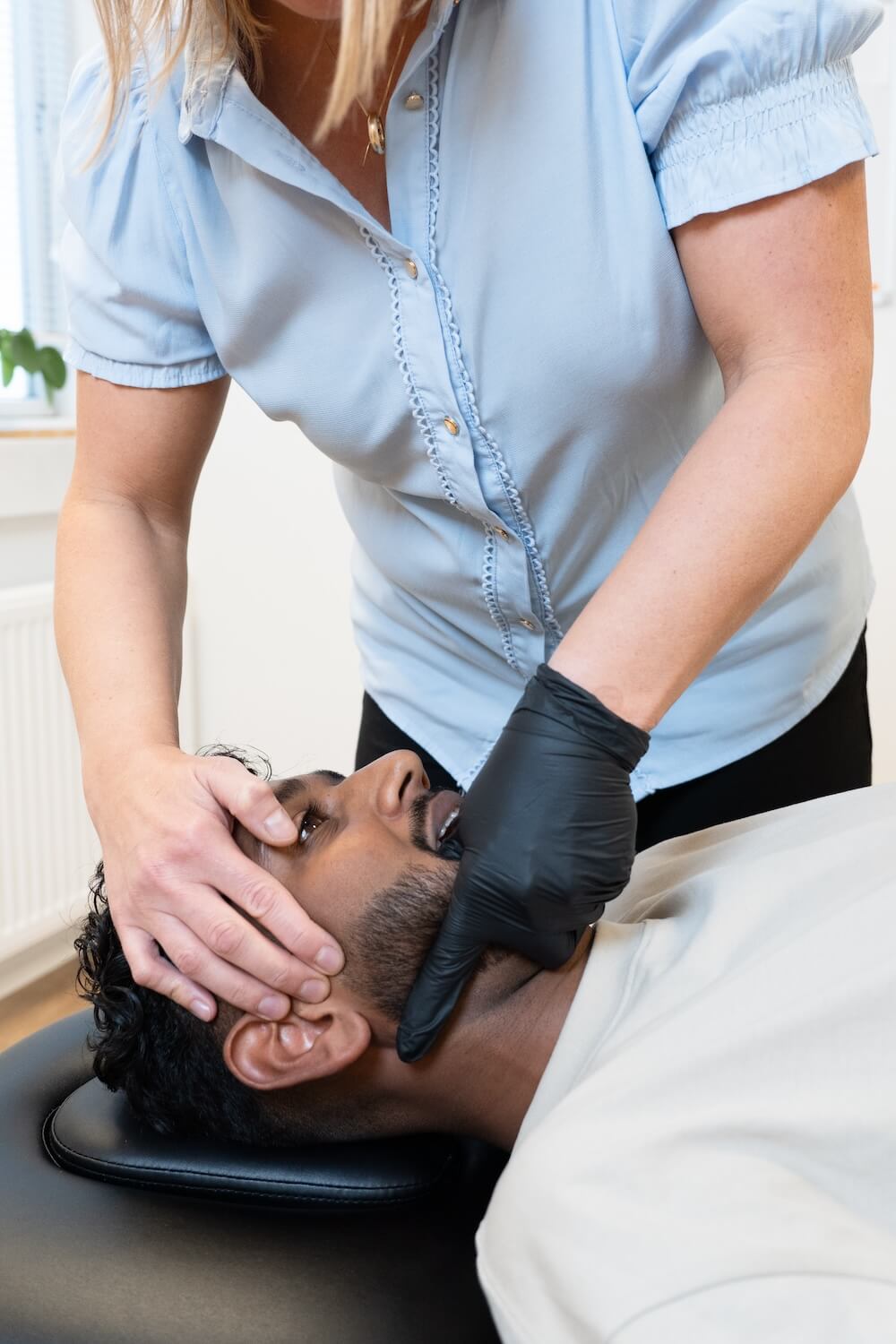
Kissing disease
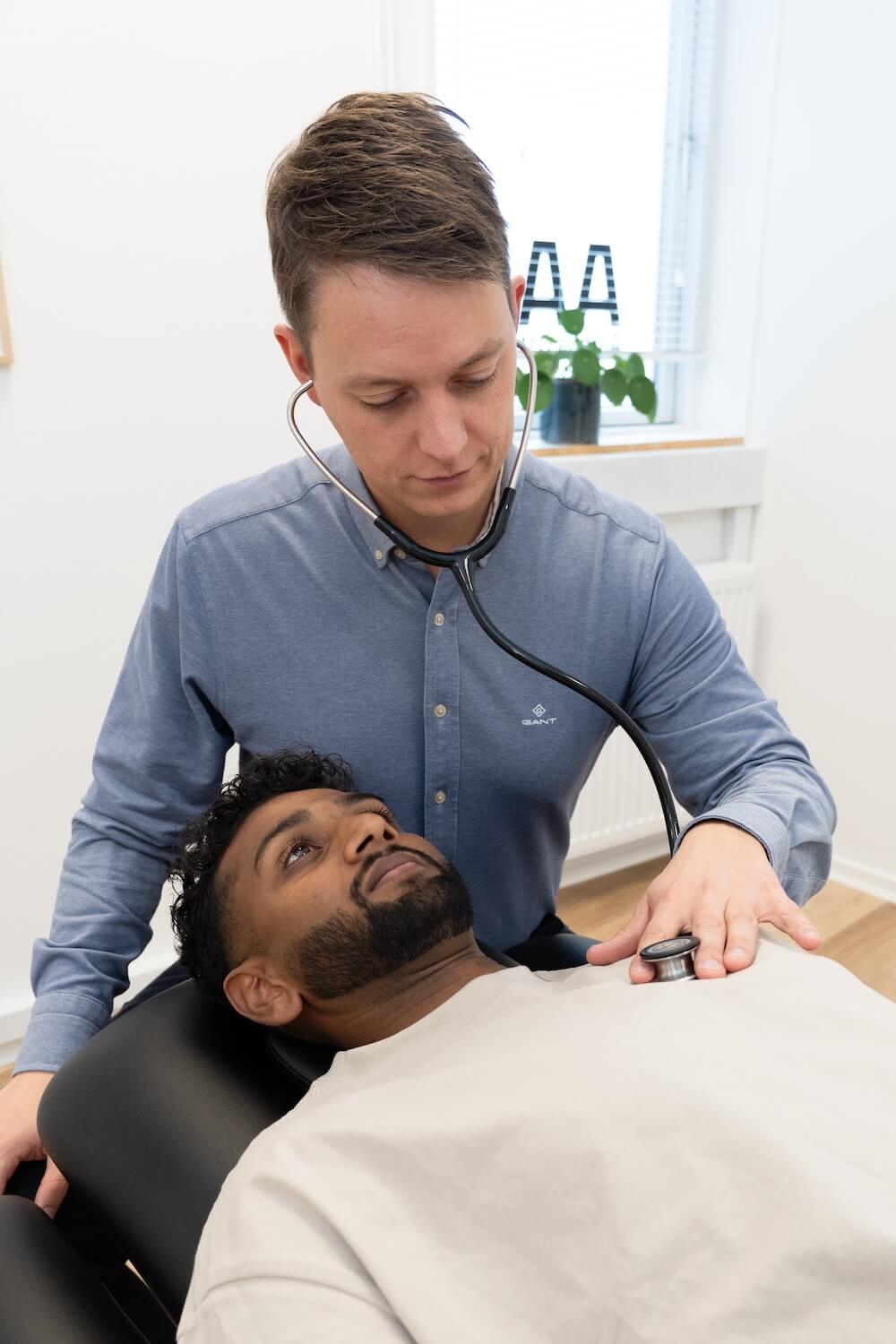
Diabetes mellitus
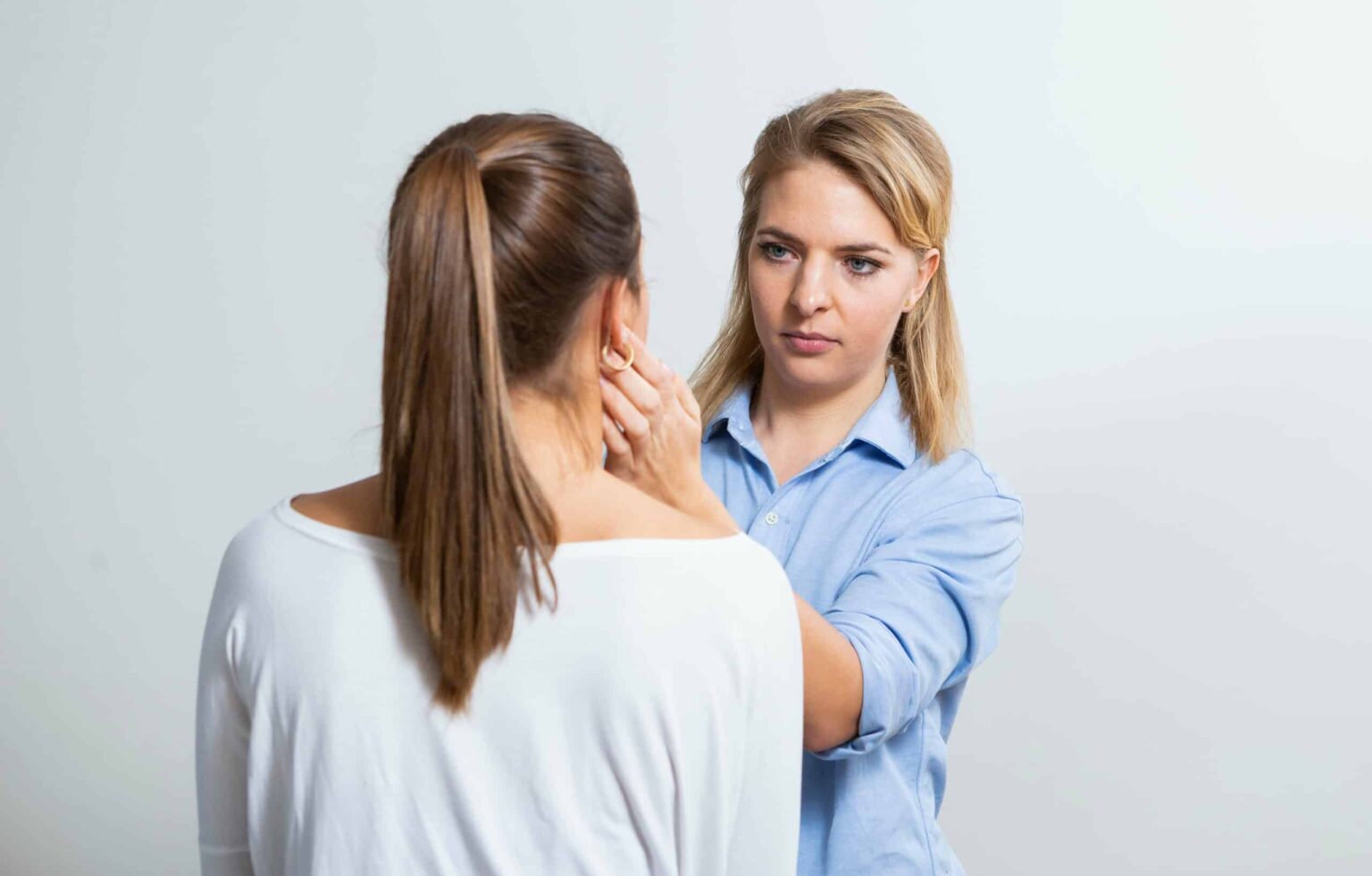
Eye inflammation

Padel injuries

Sedentary work
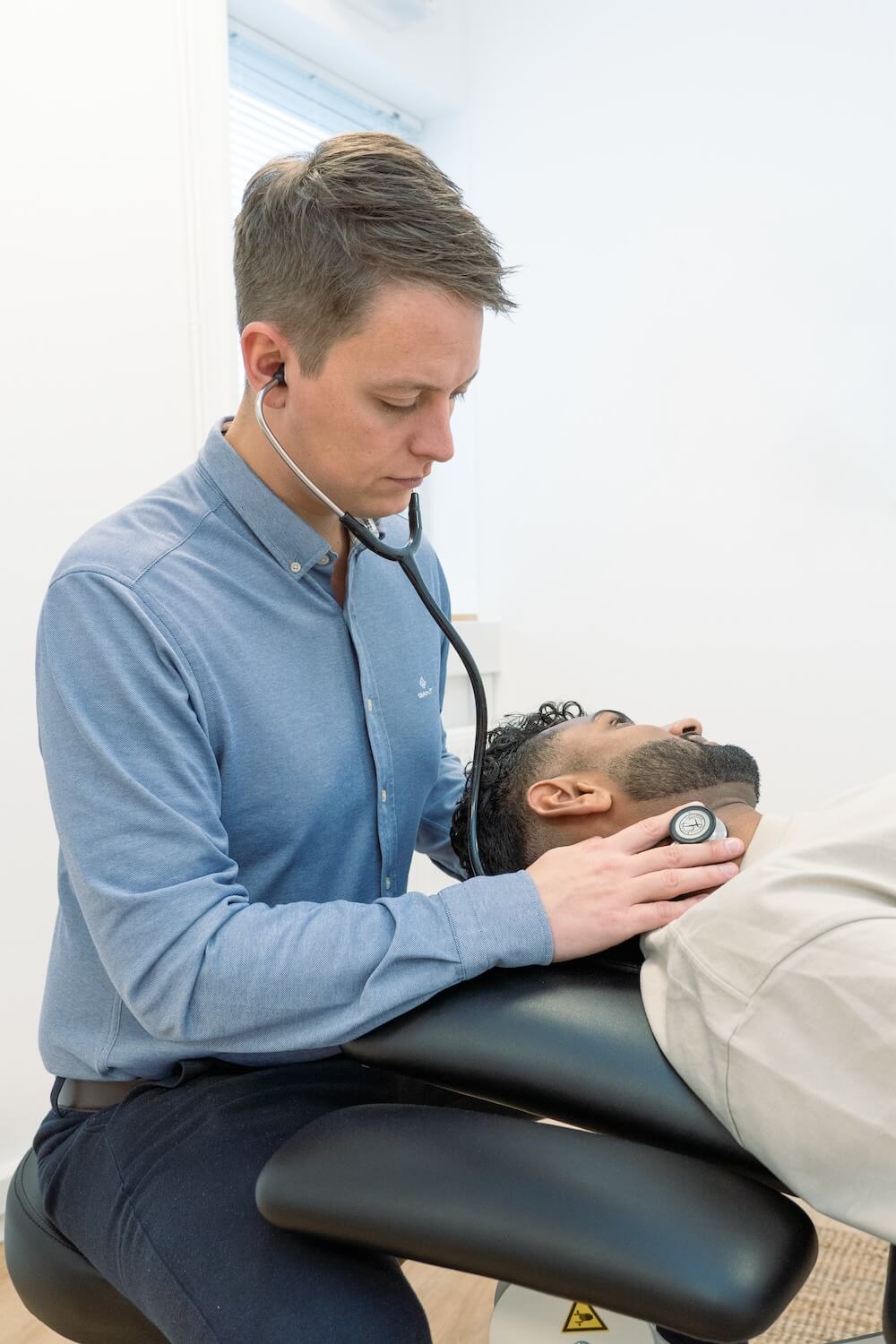
Nicotine and exercise
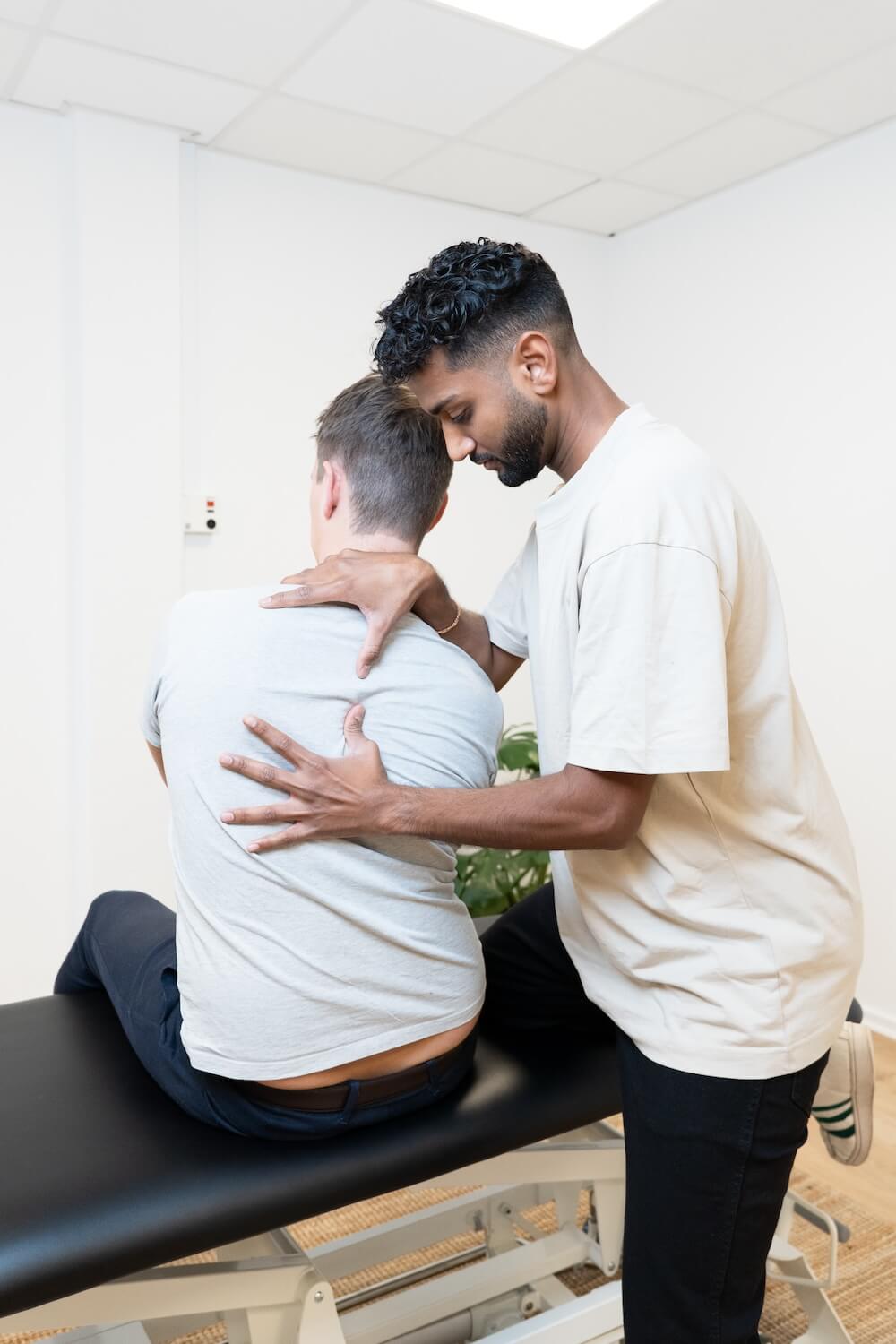
Shingles
